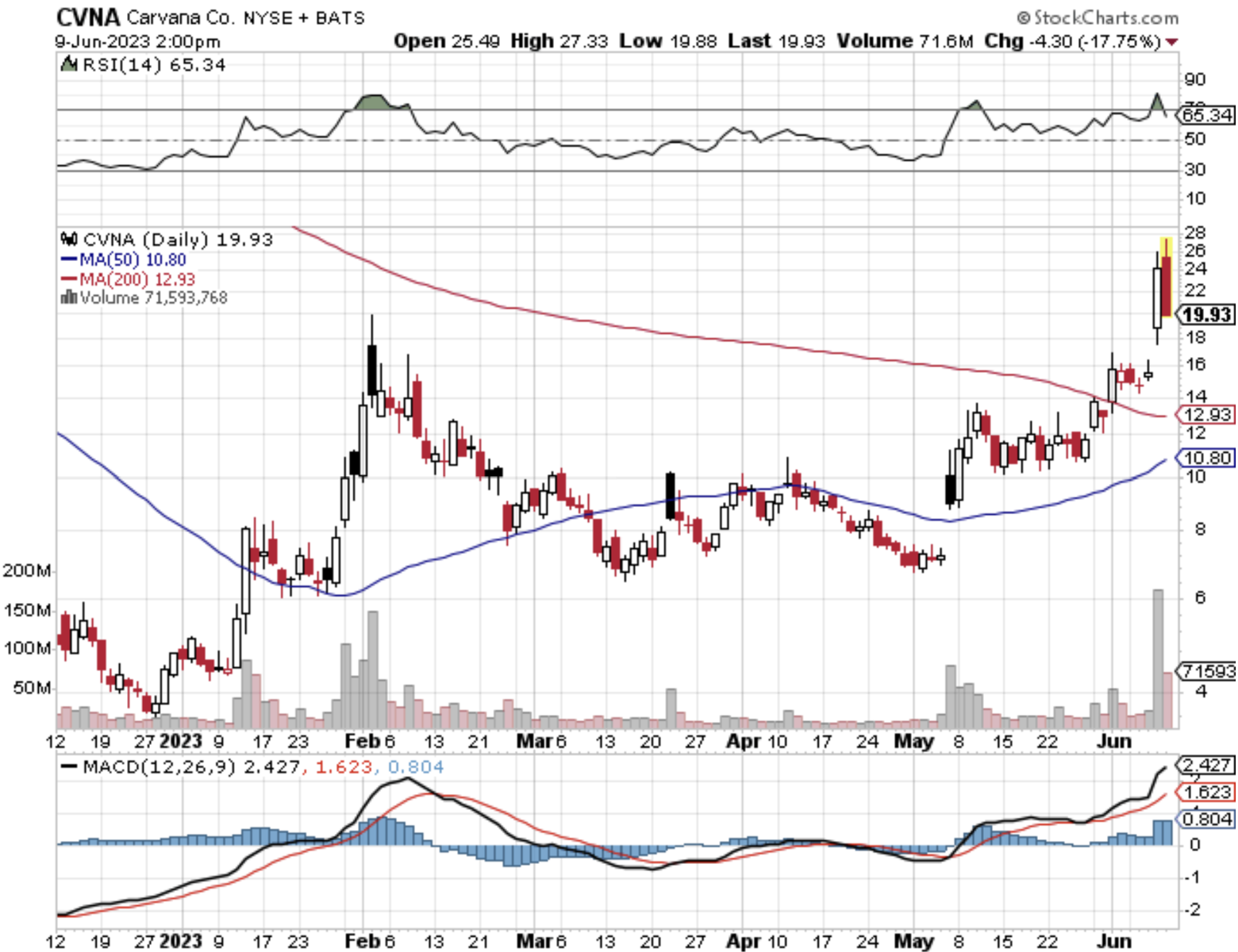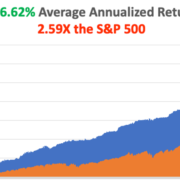The biggest takeaway I took from the used car platform Carvana’s (CVNA) latest earnings report is: who is dumb enough to buy an old car and get fleeced for $6k?
Apparently, $6k is what CVNA earns per unit in gross terms now.
But hey, if paying a broker $6k is what it takes to buy a used car then so be it.
The problem I have with the $6k gross per unit is how much further can that number go?
My bet is not much.
How much higher broker fees can Americans absorb?
My bet is not much more.
Just doing simple math means that for a $20,000 used car purchase, adding on the Carvana service would mean it costs $26,000 to the end buyer.
Sure, for some people like me and you it’s not a big deal, but I don’t believe this can scale well or efficiently as a tech platform.
That being said, it’s quite a corporate achievement for such gaudy margins and one that meant CVNA’s share exploded to the upside rising 44% on the news.
The stock is down 18% today highlighting the volatile nature of the stock.
Revenue fell 25% to $2.6 billion, but total gross profit rose 14% to $341 million.
The update helped reassure investors that the stock would be able to avoid bankruptcy after plunging as much as 99% from its peak in 2021 on slowing growth and mounting losses, especially as interest rates rise and used car prices fell for much of last year.
Carvana didn’t give guidance for net income but said adjusted earnings before interest, taxes, depreciation and amortization would be $50 million in the current quarter — way above the consensus analyst estimate of a $3.6 million loss — and gross profit per unit would be a record of more than $6,000.
Carvana’s $8.7 billion debt load as of March 31 has been a big problem for the company, which recently scrapped a debt exchange offer that would have reduced its burden because creditors held out for a better deal.
The interest on Carvana’s debt cost the company more than $2,000 per car in the first quarter, which is one reason it reported a loss of $286 million despite gross profit per vehicle sold of more than $4,000.
From peak to trough, Carvana lost 99% of its value as used car prices fell, the company made an ill-timed acquisition of the ADESA auction business, and creditors began preparing for a bankruptcy.
Although in the short term the stock is having a nice bounce, that doesn’t mean the stock’s appreciation is sustainable in the long run.
I do believe the bounce is just the proverbial dead cat bounce and ok for a quick trade and quick profit.
In a world where big tech is really crushing it, small tech needs that extra little bit of juice or special sauce to navigate the iron clad balance sheets of Silicon Valley.
Selling used cars is hard to digitize and I believe this platform will continue to burn cash on the road to a never ending feedback of explaining why it can’t be profitable.
Sell this one on the bounce.



